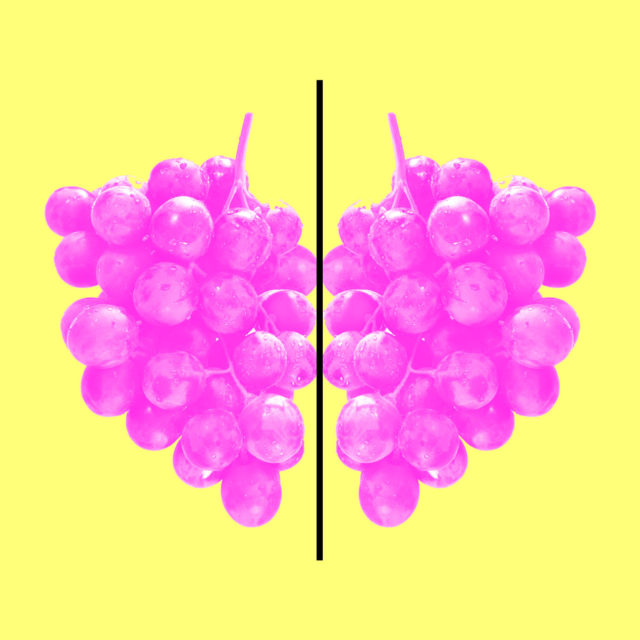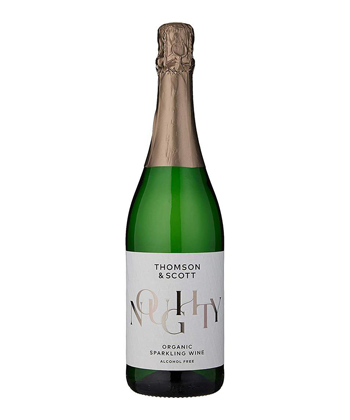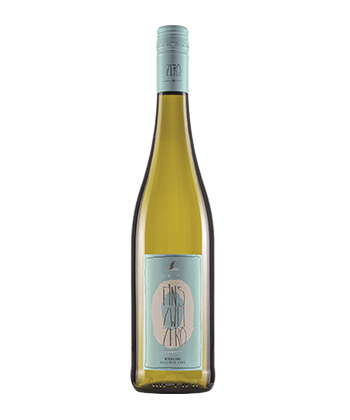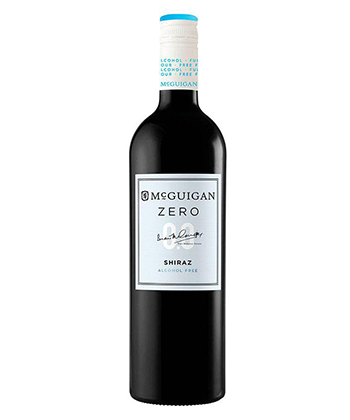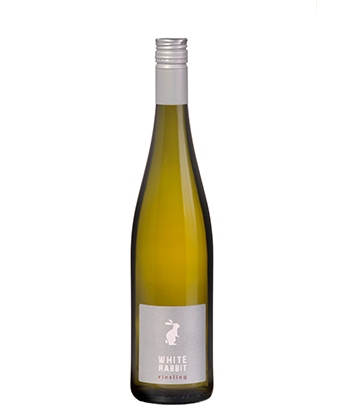Working as a drinks bizz journalist has its many boozy perks. But as the weeks, months, and, apparently, whole years have whizzed by, those innumerable bottles of something new, exciting and of substantial proof have been matched by their less heady but no-less-worthy no- and low-alcohol counterparts. Never more so than during Dry January — or indeed, “try” January, as it has been dubbed for 2021 — do I feel the full magnitude of the sheer abundance of this emerging category.
And while the beer and spirits are plentiful, the absence of low- and no-ABV wines in an otherwise flooded market is still noticeable. So, I asked a handful of prominent sommeliers in the United States and the United Kingdom which no- or low-ABV wines they’d like to put on their lists. Reader: They couldn’t name a single one. Instead, they favored the likes of sparkling teas, kombuchas, or low-alcohol table ciders — beverages that you can still serve with that sparkling-wine pop, in stemmed glassware.
That’s not to say that there aren’t any producers out there making well-executed and popular no/low wines. Sparkling wines are arguably the most prolific, with CO2 bubbles having a desirable effect on sugar levels. Thomson & Scott’s alcohol-free sparkling Chardonnay, Noughty, is enjoying universal praise, while Rieslings from the likes of Leitz Wein and White Rabbit hit the right no and low(ish) notes. Even Hunter Valley’s McGuigan has an accessible range of no fewer than five offerings, including a Chardonnay, Shiraz, and Sauvignon Blanc.
Tahiirah Habibi, wine expert and founder of the Hue Society, points out that putting these wines on their lists would be a pretty smart move for somms. When we factor in the rise of consumers looking to moderate their alcohol intake — not to mention providing more options for those not drinking due to pregnancy or health reasons — that’s a huge market ready and waiting to be introduced by experts to no/low wines. So, why is wine still hiding in the shadows of its hoppier and shorter-serve peers?
A Question of Taste
“Wine is arguably the hardest alcoholic drink type to shoehorn into a no/low format,” explains Alex Hunt, MW, purchasing director at Berkmann Wine Cellars. Why? Because of the very nature of what is arguably the world’s most discussed beverage. When you consider that wine at its core is ripe, sugary fruit that’s fermented to turn it into alcohol, dispensing of, or reversing that final step is challenging for the drinker. “The palate senses that something is missing,” says Hunt.
So how are those golden few doing it successfully? “The biggest barrier to entry for the wine industry is quality,” states Jamie Saint, chief winemaker at Australian Vintage Limited (AVL), which produces McGuigan Zero. The producer had been making dealcoholized wines (removing the alcohol gently using a spinning cone technology) for over 20 years when it launched the McGuigan range at the end of 2019, and its aim was to produce products that tasted the same as its alcoholic range.
The winery does this by changing how it makes the base wine. “Alcohol provides sweetness, warmth, viscosity to a wine and it’s exactly what holds a wine together,” Saint notes. McGuigan needed to understand how each wine changed through the dealcoholization process and counter this in the liquid that it started with.
A big ask but an important one: Most consumers being sold a non-alcoholic wine will want something that tastes like the real deal, just as they’ve come to expect with the myriad no/low beers on the market.
Yet, that goal is very rarely met, and for Camille Vidal, founder of La Maison Wellness, mimicking the taste of wine may be where some producers are falling down. “If you were to buy a non-alcoholic ‘gin’ and expect it to taste exactly like an alcoholic one, you’d be very disappointed,” she points out.
Vidal favors the crafting of more funky, or sherry-like wines, using interesting ingredients to create something that doesn’t have to be put on the same pedestal as such a historic beverage as wine.
Jan Schmidt of Leitz Wein in Germany agrees when asked about renowned winemaker Johanes Leitz’s Leitz Einz Zwei Zero Riesling. Back in 2015, Leitz was asked by a chef to create a high-end grape juice to pair with food at his restaurant. Leitz, not happy with the sweetness and aroma structure of the juice, started thinking about what else he could create. He opted for renting a vacuum distillation system from nearby Carl Jung Wines (which has been making no-ABV wine for decades) and, starting with 5,000 liters, began trialing the gentle dealcoholizing process.
“We are very happy with the results,” says Schmidt and, indeed, it may just be the best I’ve tried so far. Yet he recognizes that while the Leitz Zero has a growing customer base, some consumers may have their reservations. “Wine is a very high-rated product, a very intensely discussed category,” he says, “and the expectation of some people is very close to the real wine. We didn’t tell you it tasted like wine, we just want you to have an alternative.”
Making it Count
It certainly feels then that no/low wines still need to work on their image. Habibi thinks the barriers that stop people from trying any of the products out there and finding the ones that work for them are two-fold: marketing and education.
“I never see it marketed like alcoholic wines,” she says. “The only time I do see it is when people are hardcore seeking it out. … Just like with every other new thing in the wine industry, it’s about educating the consumer and responding to a need for it. The key is to stop ignoring the niche that does exist and market it to the right people.”
For Vidal, it’s the low-ABV market that she thinks is missing a trick. With some wines (Muscadet, Gamay, Riesling) already coming in below the 12 percent ABV mark, using the wines as a base for liquids nearing more of the 5 percent/6 percent mark could be a more natural step toward going fully alcohol free.
I agree: I’ve tried more low- and lower-ABV wines that satisfy wine’s hallowed three pillars — aroma, structure, and complexity. One nearing the higher end of the scale (9 percent ABV) is White Rabbit’s Riesling. Hunt, who carries it in Berkmann’s portfolio, certainly prefers to offer wines that come in naturally lower in ABV than going down the no-ABV route.
It feels like there is still plenty of work to be done if we’re going to see winemaking itself more established in the alcohol-free market. For Hunt, it’s the period between now and when it does that counts. “We are still quite a long way off,” he says. “Until then, the wine category really needs to avoid the temptation to jump on the bandwagon and bring substandard products to market. That could do a fair bit of damage in the long run.”
WINES TO TRY
Thomson & Scott Noughty (0 percent ABV)
This 100 percent Chardonnay sparkler is welcomingly low in sugar (just 2.9 grams per 100 milliliters) and made in the sandy soils of southern Spain. Its aroma is pleasant, but it really comes to life in the drinking, with a crisp apple character and a light effervescence. It’s vegan, halal, and only 14 calories per glass. Price: $17.99
Leitz Ein Zwei Zero Riesling (0 percent ABV)
This drop comes up again and again on “best no-ABV wine” lists for a reason. It’s evocative of a classic Riesling with stone fruits and fresh citrus notes shining through. It also sits well alongside food, making this ideal for dinner parties or on restaurant menus. Price: $15.94
McGuigan Zero Shiraz (0 percent ABV)
The only red I’ve found so far that comes close to being convincing, the McGuigan rings true to a Shiraz on the nose with touches of spice, dark cherry, and red fruits. Not much body on the palate, but it has some lovely and surprising length. Price: $8
White Rabbit Riesling (9 percent ABV)
This Riesling may only come in slightly under the usual alcohol content of wine, but those few percentage points make all the difference. This is the perfect Riesling for those looking to moderate their drinking with a glass of something special at the end of the day. Fruit-forward and fresh. Price: $9.99
